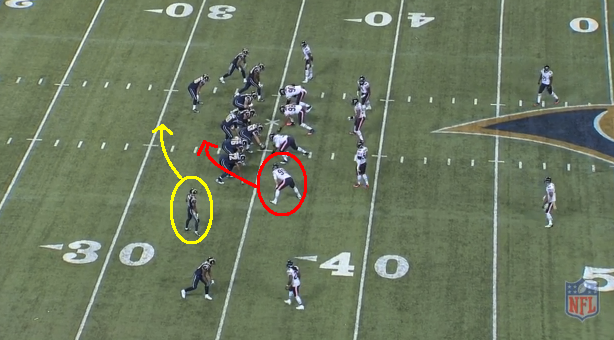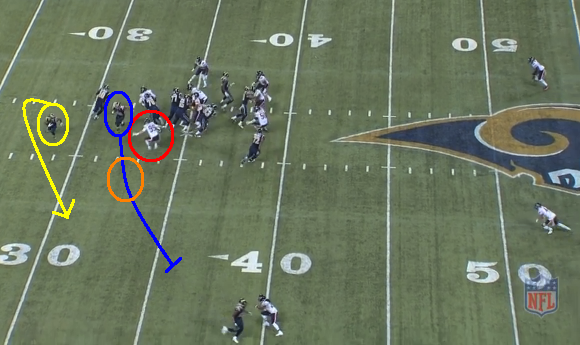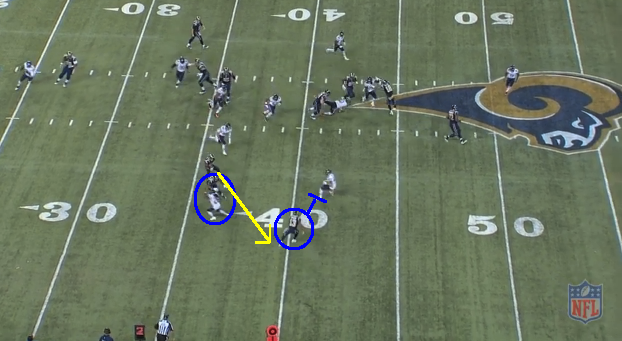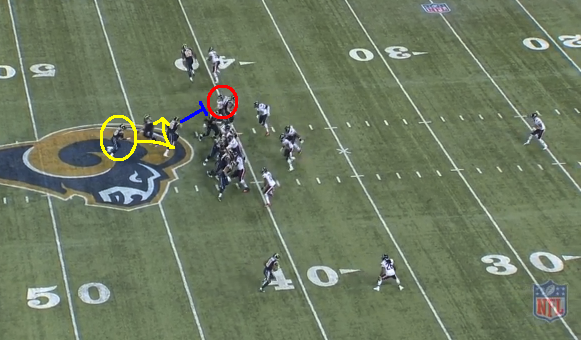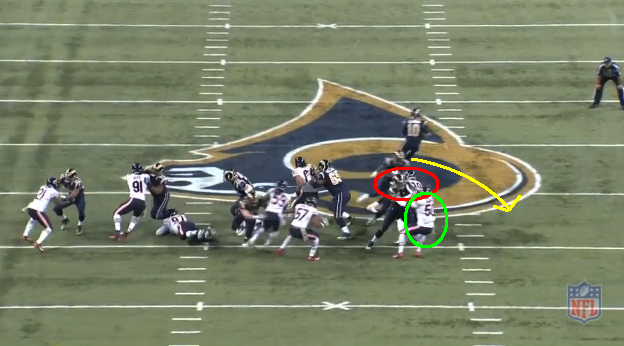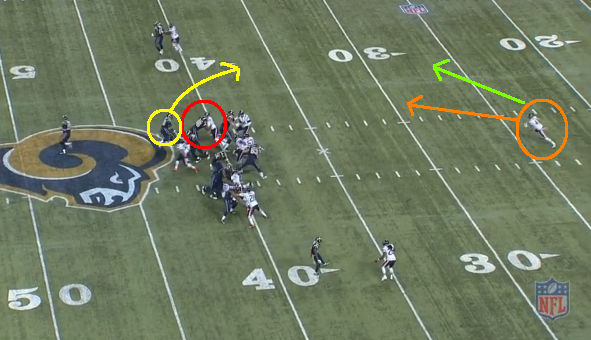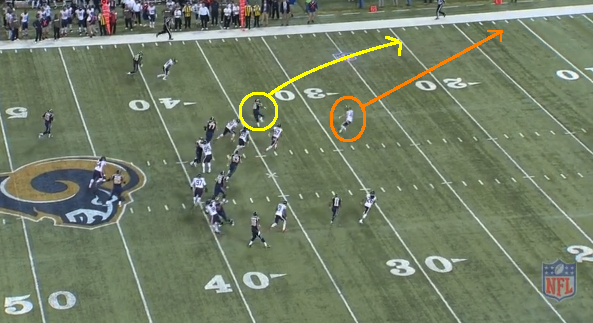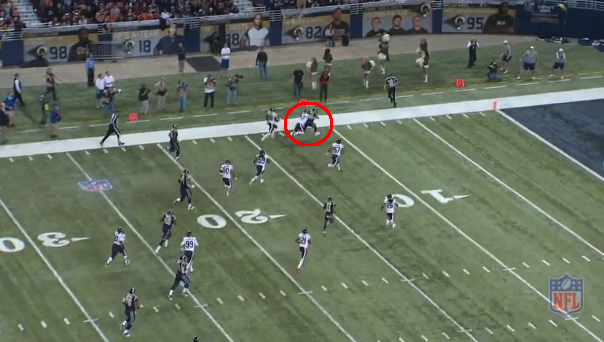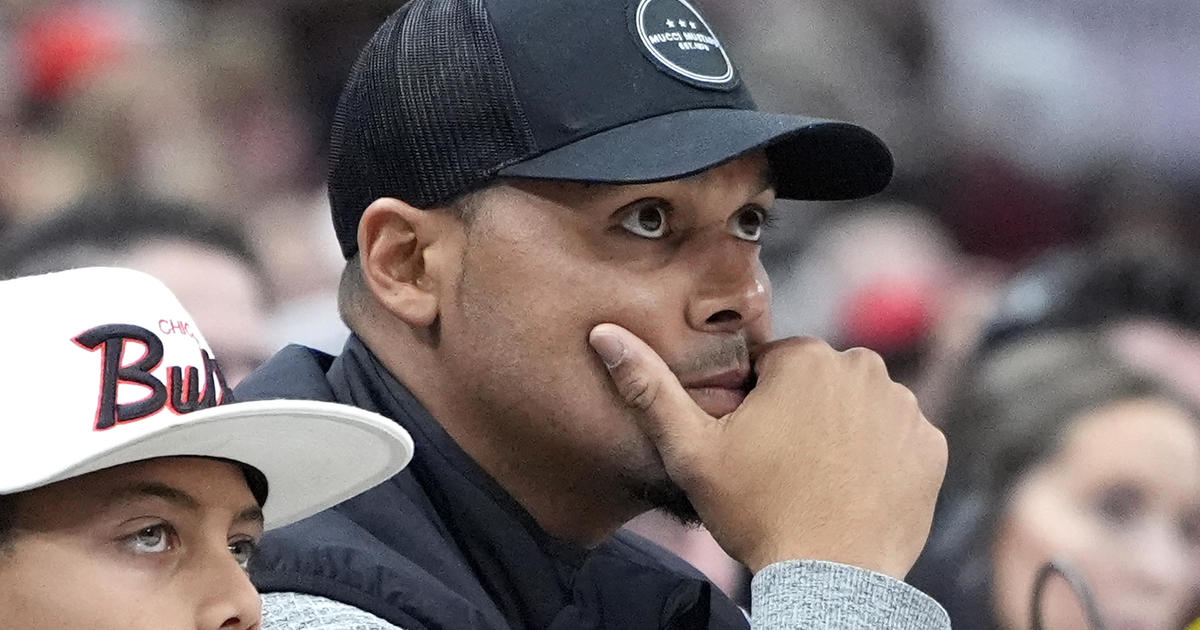Hoge: Bears Becoming Predictable On Defense
By Adam Hoge-
HALAS HALL (CBS) — Believe it or not, the Bears' run defense was actually making some progress before Sunday's disaster in St. Louis.
Maybe the muddy turf at Soldier Field had something to do with it, but there were a number of encouraging stops against the Ravens — even if they finished with 174 rushing yards as a team.
"I think there were 10-12 clips of everyone on defense, in the run game, doing exactly what they were supposed to do," Bears defensive coordinator Mel Tucker said Wednesday. "They were 1, 2, 3-yard gains. And so that's encouraging. We're looking to build off of those plays."
So, after allowing 258 rushing yards to the Rams a week later, Tucker showed those clips to his defense this week in an attempt to show them that they can make those stops — they just need to do it more consistently.
"In order to play great defense, especially run defense, everyone needs to be exactly where they need to be on every play. It only takes one breakdown to cause a big play. We really don't have margin for error, especially when you're playing good teams with good talent," Tucker said.
The Rams proved that Sunday by exposing common weaknesses with the unit that are easy to find on tape.
One of those weaknesses is the lack of backside contain, which falls on the shoulders of the backside defensive end or linebacker (or both) depending on the assignments.
Shea McClellin has been particularly aggressive when unblocked on the backside. The Rams took advantage of this with a brilliant play design built to expose such overpusuit with misdirection. Rams head coach Jeff Fisher admitted they moved the play up on the call sheet for this game against the Bears. They couldn't wait to get to it, calling it on the third play from scrimmage.
As you'll see in the formation, talented rookie Tavon Austin (circled in yellow) lines up in the slot and will go in motion into the backfield from right to left. The Rams' offensive line blocks down to their left, aiding in the misdirection of the play. McClellin (circled in red) is left unblocked by design.
As you probably know by now, McClellin tends to get stuck on run blocks, failing to disengage. Maybe it's a byproduct of that, but when he goes unblocked, he crashes hard, especially on the backside. This play exposes that tendency perfectly. Austin takes the pitch in the backfield, sticks his foot in the ground and switches direction instantly. In the Bears' defense, there are few players in the league who are capable of doing that and few plays that will ask a player to reverse fields on their own.
"I'll tell you what, a lot of it has to do with the speed of that athlete," Tucker said. "He's an excellent player. And then it was poor execution on our part, really, at the point of attack. So we lost leverage and let him outside the defense. From there it was basically a footrace that we lost."
It didn't need to be a footrace though. Had McClellin not lost leverage and set the edge (as the backside defensive end is usually assigned to do), the Bears could have stopped this for a short gain. To be fair, chances are McClellin was never going to make this play anyway, but that doesn't mean he couldn't have help a teammate make the stop.
Not only is Austin as quick as he is, but tight end Lance Kendricks (circled in blue, below) is coming across the formation to make a block. If McClellin had kept contain, he would have likely been where the orange circle is instead of where he ended up (circled in red). Thus, he would have occupied Kendricks, freeing up someone else to make the stop.
As you can see in the end zone angle, McClellin pursued so far that Kendricks didn't have to worry about him. Meanwhile, the rest of the defense bit on the misdirection so hard that right tackle Joe Barksdale (circled in green) is wandering downfield with no one to block.
But believe it or not, McClellin wasn't completely out of this play yet, but he needs some help — help he didn't get.
Kendricks is now able to block cornerback Tim Jennings, who is a good open field tackler and would have had a chance to make the stop had McClellin occupied the blocker. Instead, Jennings has no chance against the much bigger Kendricks. The last hope is safety Chris Conte, who still has a chance to either make the tackle or push Austin back to the inside where McClellin (among others) are coming back to the play.
Unfortunately, Conte comes flying in and stops his feet, which as a safety, you can't do. This allows Austin to read his blockers and bounce outside. This is the moment the play is over for the Bears.
This is the All-22 angle at the same moment and you can see the space Austin has once he gets those two blocks. Wide receiver Chris Givens not only takes Conte out, but he also eliminates McClellin from the play. As Tucker said, "it was basically a footrace" at this point. Austin isn't going to lose too many of those and he goes 65 yards for the touchdown.
But this wasn't the only time the Rams took advantage of the Bears' backside pursuit with misdirection.
Later in the first quarter, running back Zac Stacy picked up 35 yards on a simple misdirection trap. And, once again, they ran to McClellin's side.
Like the first play, the offensive line leaves McClellin (circled in red) unblocked by design. This sucks the defensive end into the backfield (taking advantage of his tendency to lose leverage when unblocked) and H-back Cory Harkey blocks him.
The end zone angle shows how far inside McClellin pursued on the misdirection. Linebacker James Anderson (circled in green) also appears to have over-pursued, but it's unclear what his assignment was on the play.
The All-22 angle gives a better look at how the Bears have lost contain.
And just like the first play, McClellin wasn't the only reason why this turned into a big play. There are breakdowns on every level, with safety Chris Conte (cirlced in orange) a culprit again. The orange arrow shows the angle of pursuit Conte took to the ball. The green arrow shows the angle he should have taken.
The steep angle Conte takes allows Stacy to bounce towards the sideline, leaving Conte chasing from behind.
Fortunately, Conte is able to use his speed — the speed the Bears fell in love with when they drafted him — to eventually drag Stacy down near the 10-yard-line. The poor angle likely cost the Bears 15 to 20 yards though.
These two run plays are pretty much a synopsis of the Bears' season when it comes to defending the run. These are common mistakes easy to identify on film that teams are taking advantage of by design.
The problem is no longer just a lack of execution -- it's that the lack of execution has become too predictable.
Adam Hoge covers the Bears for CBSChicago.com and is a frequent contributor to 670 The Score. Follow him on Twitter at @AdamHoge.
